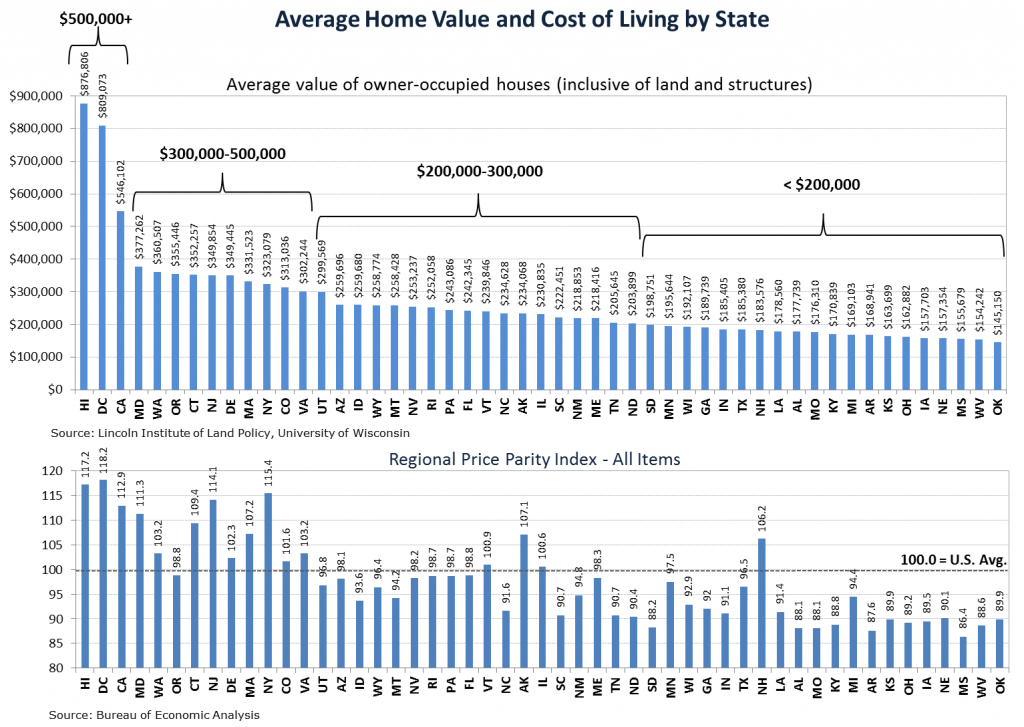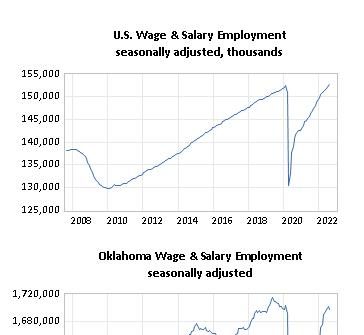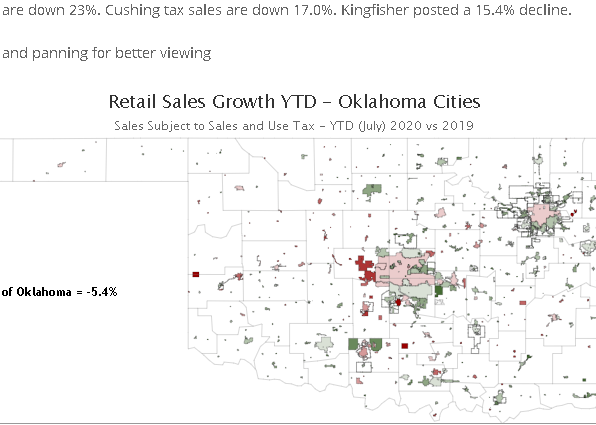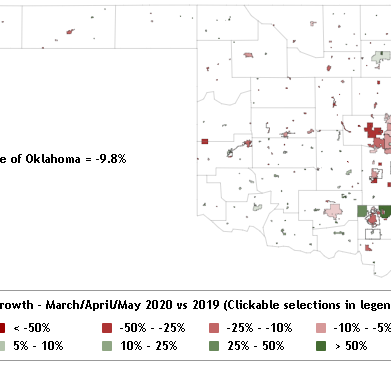Oklahoma's post-pandemic recovery has been disappointingly slow relative to the nation. The state and both major metro areas have lagged well behind the U.S. in…
Pic-of-the-Week: Does Expensive Housing = High Living Costs?
The cost of living in a state typically reflects housing costs, but not always – The variation in housing costs across the 50 states is remarkable. The average value of a single family owner-occupied home in the U.S. ranges from a low of $145,000 in Oklahoma to a high of $877,000 in Hawaii. Similarly, the overall cost of living in Hawaii is 17% above the national average but is 10% below in Oklahoma. Yet per capita personal income is only about 10% higher in Hawaii.
From an asset value point of view, high home price are a wonderful thing. But from an economic development point of view where business can be transacted anywhere, high home prices can at times function as a competitive disadvantage.
So, are high home prices always associated with a overall high cost of living, and vice versa? Most of the time, yes, as you can see from the chart below. There is a clear association between the average value of a home and the cost of living across the states. But not always!
Oregon is a clear exception, with a $355,000 average home value but a cost of living below the national average.
In the $200,000 to $300,000 range, North Carolina, South Carolina, Tennessee, and North Dakota all have an average cost of living that is roughly ten percent below the nation. Conversely, the average home in Alaska costs only $234,000 while the overall cost of living is 7% above the nation.
Below $200,000 you find some real bargains, where housing is low-cost and the overall cost of living is modest. In Alabama, Missouri, Kentucky, Arkansas, Kansas, Ohio, Iowa, Mississippi, West Virginia, and Oklahoma, the average home value is $176,000 or less and the cost of living is at least 10% below the U.S. average. The exception below $200,000 would be New Hampshire where the average home is valued at just $184,000 but the cost of living is 6% above the U.S. average.




